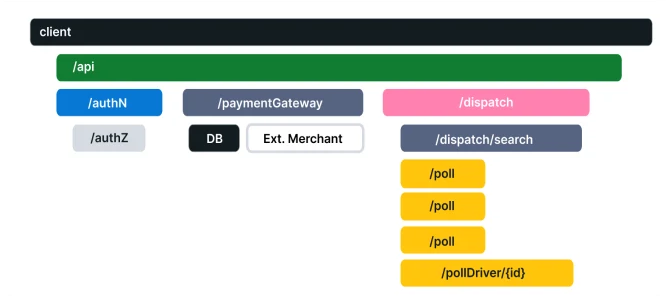Observability Primer
What is Observability?
Observability lets us understand a system from the outside, by letting us ask questions about that system without knowing its inner workings. Furthermore, allows us to easily troubleshoot and handle novel problems (i.e. “unknown unknowns”), and helps us answer the question, “Why is this happening?”
In order to be able to ask those questions of a system, the application must be properly instrumented. That is, the application code must emit signals such as traces, metrics, and logs. An application is properly instrumented when developers don’t need to add more instrumentation to troubleshoot an issue, because they have all of the information they need.
OpenTelemetry is the mechanism by which application code is instrumented, to help make a system observable.
Reliability & Metrics
Telemetry refers to data emitted from a system, about its behavior. The data can come in the form of Traces, Metrics, and Logs.
Reliability answers the question: “Is the service doing what users expect it to be doing?” A system could be up 100% of the time, but if, when a user clicks “Add to Cart” to add a black pair of pants to their shopping cart, and instead, the system keeps adding a red pair of pants, then the system would be said to be unreliable.
Metrics are aggregations over a period of time of numeric data about your infrastructure or application. Examples include: system error rate, CPU utilization, request rate for a given service.
SLI, or Service Level Indicator, represents a measurement of a service’s behavior. A good SLI measures your service from the perspective of your users. An example SLI can be the speed at which a web page loads.
SLO, or Service Level Objective, is the means by which reliability is communicated to an organization/other teams. This is accomplished by attaching one or more SLIs to business value.
Understanding Distributed Tracing
To understand Distributed Tracing, let’s start with some basics.
Logs
A Log is a timestamped message emitted by services or other components. Unlike Traces, however, they are not necessarily associated with any particular user request or transaction. They are found almost everywhere in software, and have been heavily relied on in the past by both developers and operators alike to help them understand system behavior.
Sample Log:
I, [2021-02-23T13:26:23.505892 #22473] INFO -- : [6459ffe1-ea53-4044-aaa3-bf902868f730] Started GET "/" for ::1 at 2021-02-23 13:26:23 -0800
Unfortunately, logs aren’t extremely useful for tracking code execution, as they typically lack contextual information, such as where they were called from.
They become far more useful when they are included as part of a Span.
Spans
A Span represents a unit of work or operation. It tracks specific operations that a request makes, painting a picture of what happened during the time in which that operation was executed.
A Span contains name, time-related data, structured log messages, and other metadata (i.e. Attributes) to provide information about the operation it tracks.
Below is a sample of the type of information that would be present in a Span:
Span Attributes
| Key | Value |
|---|---|
| net.transport | IP.TCP |
| net.peer.ip | 10.244.0.1 |
| net.peer.port | 10243 |
| net.host.name | localhost |
| http.method | GET |
| http.target | /cart |
| http.server_name | frontend |
| http.route | /cart |
| http.scheme | http |
| http.host | localhost |
| http.flavor | 1.1 |
| http.status_code | 200 |
| http.user_agent | Mozilla/5.0 (Macintosh; Intel Mac OS X 10_15_7) AppleWebKit/537.36 (KHTML, like Gecko) Chrome/106.0.0.0 Safari/537.36 |
For more on Spans and how they pertain to OTel, visit Spans in OpenTelemetry.
Distributed Traces
A Distributed Trace, more commonly known as a Trace, records the paths taken by requests (made by an application or end-user) as they propagate through multi-service architectures, like microservice and serverless applications.
Without tracing, it is challenging to pinpoint the cause of performance problems in a distributed system.
It improves the visibility of our application or system’s health and lets us debug behavior that is difficult to reproduce locally. Tracing is essential for distributed systems, which commonly have nondeterministic problems or are too complicated to reproduce locally.
Tracing makes debugging and understanding distributed systems less daunting by breaking down what happens within a request as it flows through a distributed system.
A Trace is made of one or more Spans. The first Span represents the Root Span. Each Root Span represents a request from start to finish. The Spans underneath the parent provide a more in-depth context of what occurs during a request (or what steps make up a request).
Many Observability back-ends visualize Traces as waterfall diagrams that may look something like this:

Waterfall diagrams show the parent-child relationship between a Root Span and its child Spans. When a Span encapsulates another Span, this also represents a nested relationship.
For more on Traces and how they pertain to OTel, visit Traces in OpenTelemetry.